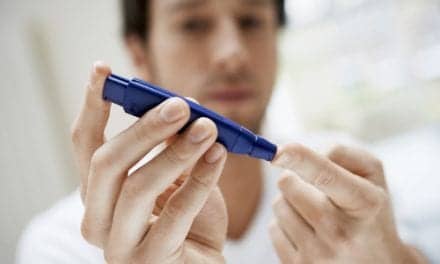New research sheds light on the global prevalence of mild obstructive sleep apnea in women.
Interview by Alyx Arnett
Women with obstructive sleep apnea (OSA) often present with lower apnea-hypopnea indexes (AHI) and fewer oxygen desaturations than men, as well as atypical symptoms like fatigue and insomnia—differences that put them at risk of being underdiagnosed and undertreated.1

But despite its subtler appearance, research suggests that the negative effects of OSA in women are just as significant, if not worse, for similar degrees of severity in men.1
Alison Wimms, PhD, director of clinical research in the medical affairs team at ResMed, and co-investigators conducted a study in 2019 examining the effectiveness of CPAP in the mild OSA population and found that many were highly symptomatic. The team conducted a post-hoc analysis of the study, comparing males to females. They determined that, despite having lower AHIs, women reported significantly worse sleepiness, fatigue, anxiety, depression, and quality of life across various measures.
“At this stage, we realized how important it was to understand and quantify the scope of this issue,” says Wimms.
This led Wimms and co-investigators to their most recent study: determining the global prevalence of mild OSA in women. Using data from adults aged 30 to 70 from 164 countries, they estimated how many women worldwide have mild OSA.
Wimms discussed the study, which was presented at SLEEP 2023 and is currently under peer review for publication, with Sleep Review over email.
[Editor’s Note: Read the abstract, Global prevalence of mild obstructive sleep apnea in females, in Sleep.]
What were the main findings of your study?
Based on the American Academy of Sleep Medicine 2012 scoring, it is estimated that, globally, approximately 202,157,057 of 1,513,628,587 (13.4%) females aged 30 to 70 have mild OSA. When you use this scoring criterion, you identify patients at the very mild end of the spectrum, many of whom will screen as having no OSA if earlier scoring criteria are used.
Were there any surprising findings?
We weren’t surprised by the data; however, we were concerned for the approximately 13.4% of women with mild OSA. Women with OSA are at risk of being missed and misdiagnosed for two reasons. One is because they more often suffer from mild OSA, and if the newest scoring criteria (ie, hypopneas being defined as associated with a ≥ 3% oxygen desaturation or arousal from sleep) are not applied, then they can be misclassified as having no sleep apnea.
And secondly, because women present with different symptoms than the typical sleepiness, snoring, and witnessed apneas that we associate with sleep apnea, they are often misdiagnosed. Another concern is that some healthcare systems and physicians do not think mild OSA warrants treatment, yet from our data we have seen that quality of life can be very impacted by untreated mild OSA.
How do your findings add to the current understanding of mild OSA in females?
Potentially the biggest issue that mild OSA patients are still facing is a general lack of awareness. In our sleep clinics, it is very common for our female patients to vent their frustration at their journey, from being told things like “it’s normal to feel worn out” or being investigated for a range of other issues such as low iron, hyperthyroidism, menopause-related issues.
Many primary care physicians do not recognize that OSA can be a significant issue in patients who are not male and obese, and when you add symptoms such as insomnia and anxiety, without clear “classic OSA” symptoms, it is understandable that these women can take a long time to get diagnosed with OSA. It is our hope that this new information will assist with the growing need to educate healthcare providers about OSA in females.
How, if at all, will your findings impact the sleep medicine community’s approach to diagnosis and treatment?
The MERGE trial and subsequent post hoc analysis showed that mild patients, including women, can have significantly improved quality of life with CPAP treatment. With this further understanding of the prevalence of mild OSA in females, we hope that this information will assist healthcare systems and individuals in the sleep medicine community to plan effective diagnosis and management strategies so that the negative health impacts of OSA can be minimized.
What areas of research should be prioritized to further address the issue of mild OSA in females?
Continuing awareness, education, and appropriate treatment pathways are crucial to ensure women with mild OSA are not overlooked. One other important area of further research is the development of new screening tools that are more appropriate for female patients, which don’t rely heavily on sleepiness and/or obesity, both of which may not be apparent in mild OSA in females.
Reference
- Wimms A, Woehrle H, Ketheeswaran S, et al. Obstructive sleep apnea in women: specific issues and interventions. Biomed Res Int. 2016;2016:1764837.
Photo 67461790 © Stokkete | Dreamstime.com





